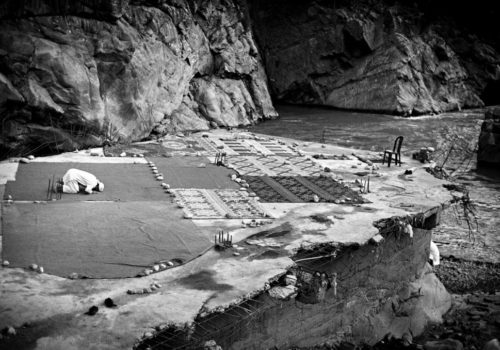Do paradise exist? Yes, but it also hell. There are lost paradises and forgotten hells. The Swat Valley, in Pakistan, was at one time noted as a paradise by its people and by those who visited. Today, it’s not hell, but it’s no longer the paradise, that was nicknamed “Switzerland of the East”
More than twice in less than a decade this region of Pakistan suffered for different reasons, basically human fightings and natural disasters. Like the aftermath of the great floods in 2010. Edwin Koo, documentary photographer from Singapore who has recently released the photography book “Paradise”, said that “in the absence of bridges, chairlifts became a common alternative. Every few kilometres, queues formed on either bank, with men waiting to lug home 40-kilogram sacks of emergency rations. Sometimes, the chairlifts were nothing more than a wooden cart that vacillated left and right across the raging river, as its passengers held on for dear life”.
Many of the times, as is evident looking at Koo’s book, these passengers were children. From the rich text by the photographer, “although the physical destruction was obvious to see, less evident was the war’s psychological aftershock on the people of Swat, especially its children”.
The destruction, permanent part of the landscape in his dramatic black and white photography, was obviously due not only to Nature, but Man. If the collective memory does not remember well the conseguences of the 2010 floods, it should not easily forget the bloody conseguences of the Taliban period and the military operations of Pakistan’s army. Years of wars and in the middle of an exodus which counts more than two million Swatis who moved their home seeking a better hell where to live, but with the hope, one day, to come back to their original own paradise.
BOOK
Paradise
Photography by Edwin Koo
Pernord Ricard Singapore & Edwin Koo
Designed and Produced by ArtPostAsia
Singapore
2013
















